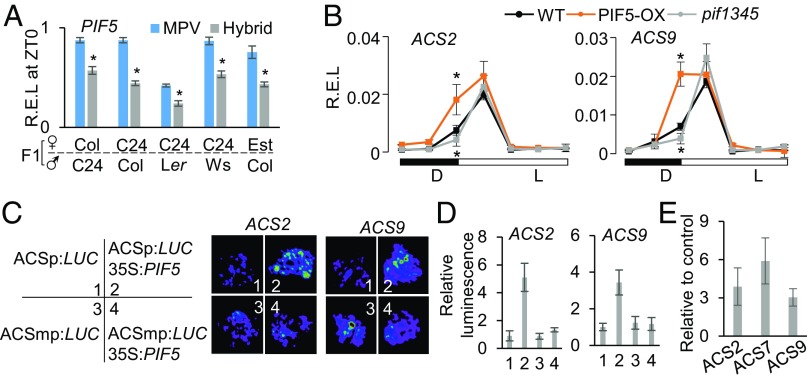Fig. 4.
ACS genes are regulated indirectly by PIF5 at night. (A) R.E.L. of PIF5 at ZT0 in F1 hybrids between different combinations of ecotypes. Asterisks indicate down-regulation in the hybrids at the statistically significant level (P < 0.05) relative to MPV. (B) R.E.L. of ACS2 and ACS9 in Col-0 (WT), PIF5-OX, and pif1345 mutant lines in diurnal conditions. Asterisks Above and Below the graphs, respectively, indicate up-regulation in PIF5-OX and down-regulation in pif1345 at the statistically significant level (P < 0.05) relative to WT. (C) Transient luciferase expression assays indicate that PIF5 directly activated expression of ACS2 and ACS9. The infiltrated constructs are ACS promoter fused with luciferase (ACSp:LUC, 1), ACSp:LUC cotransfected with 35S:PIF5 (2), ACS mutated promoter:luciferase (ACSmp:LUC, 3), and ACSmp:LUC with 35S:PIF5 (4). Luciferase activity images of N. benthamiana leaves are shown for ACS2 and ACS9. (D) Relative luminescence intensity (y axis) for each comparison in C. (E) ChIP-qPCR showed fold enrichment (y axis) of PIF5 in the promoters of ACS2, ACS7, and ACS9. Coding region of PP2A was used as a nonbinding control for normalization.

